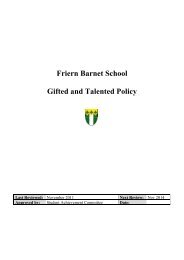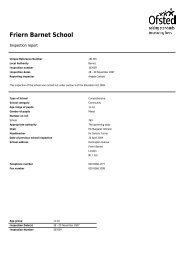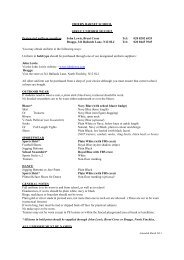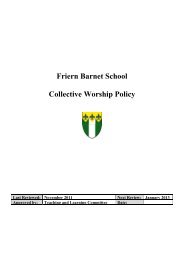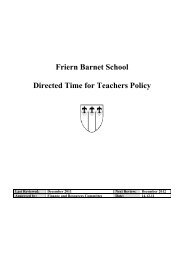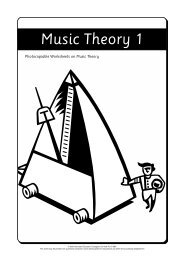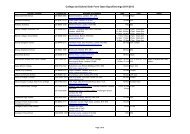VOL 166 Music Theory 2 - Friern Barnet School
VOL 166 Music Theory 2 - Friern Barnet School
VOL 166 Music Theory 2 - Friern Barnet School
Create successful ePaper yourself
Turn your PDF publications into a flip-book with our unique Google optimized e-Paper software.
Name: ____________________ <strong>Music</strong> <strong>Theory</strong> 2 Worksheet<br />
PASSING AND AUXILIARY NOTES<br />
A passing note as the name suggests doesn’t form a part of a chord it just passes between notes<br />
which are found in the harmony chords, linking them together. Passing notes are usually found<br />
on the weak beats of the bar and move by step. The passing note always falls between two notes<br />
moving in the same direction and can occur in any voice part.<br />
= passing note<br />
An accented passing note falls on the strong beat of the bar but unaccented passing notes<br />
which fall on the weak beat of the bar are more commonly used.<br />
unaccented<br />
passing note<br />
An auxiliary note is written<br />
between two notes of the same<br />
name. An upper auxiliary note<br />
moves one step higher than the<br />
original note and then returns to it<br />
and a lower auxiliary note moves<br />
one step lower than the original<br />
note and then returns to it. An<br />
auxiliary note can either move a<br />
tone or a semitone.<br />
accented<br />
passing note<br />
upper<br />
auxiliary notes<br />
lower<br />
auxiliary notes<br />
www.keynoteseducation.com © 2004 Keynotes Education Crossgate Cornwall PL15 9SX<br />
This sheet may be printed from a personal computer and/or photocopied for educational use within the purchasing establishment<br />
Bach<br />
Find the passing and auxiliary notes in the extract<br />
below. Write P for the passing notes and A for the<br />
auxiliary notes.<br />
20






